The acronym HPC could be creatively translated as Hyperactive Process Circus. An example of such a system, the Arctur-2 from Nova Gorica, is pictured right. It is an above-average-performance computing system that works at full capacity for most of its lifetime – so we can say that compared to the sloths known as desktop computers, it is a true hyperactive system. We will come back to this comparison, but first let us resolve the rest of the meaning of the acronym HPC. It is about processing, that is to say, computing. We can perform or compute more calculations more quickly on such a system than on conventional computers, which is why some people call it a supercomputer. Last but not least, we can see in the picture that the computer is round, which immediately reminds us of a circus. It is also at least as noisy as a circus – both in terms of sound and media. And every modern country wants to have its own circus, as big as possible and with as many lights as possible. Slovenia too.
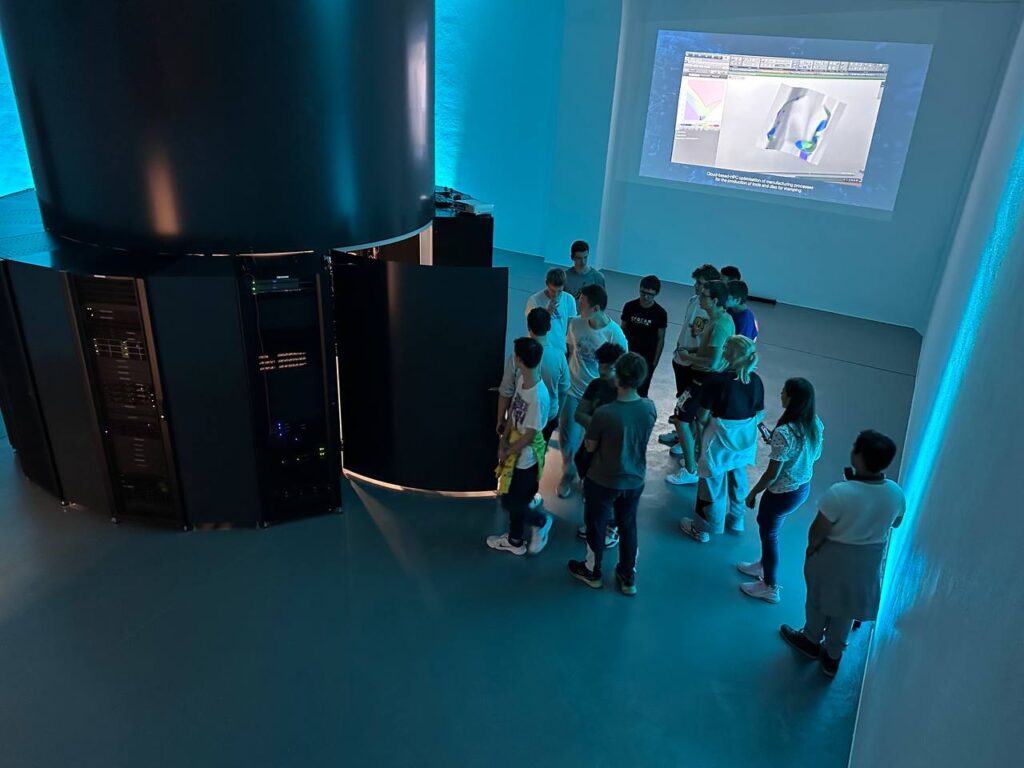
In computer science, a more established interpretation of the acronym HPC is high-performance computing
Supercomputing and HPC often fight for the attention of technology insiders because they mean almost the same thing: the development and use of extremely high-performance computing systems. Supercomputers are designed to process huge amounts of data and perform complex tasks with a high degree of computational intensity without prolonged downtime. This allows them to solve problems beyond the capabilities of the conventional computing systems we are used to in the form of desktop or laptop computers. There would be no timely and reliable weather forecasting without a supercomputer, and we would be waiting an unacceptably long time for the results of various physical/chemical/biological simulations. Optimising production processes on such systems provides companies with a competitive advantage and, yes, you are right, even research into new drugs, the learning of large-scale language models and the development of autonomous driving are enabled and significantly accelerated by high-performance computing technology.
The supercomputer nowadays usually takes the form of a computer cluster
This is a collection of a large number of nodes of different types. The entry nodes are the entry point for users, the data nodes on a distributed file system store petabytes of data, and the master node orchestrates it all. We have left the most interesting type for last: the compute node, which can be imagined as a desktop computer on steroids. It usually has more than one central processing unit, each with at least a dozen processing cores, gigabytes of memory in at least three digits, and, increasingly, a graphics processing unit, two or four of them – each costing the price of a decent passenger car – attached to the base. A new car at that. That’s a modest description of a single compute node, of course there are many in the cluster. Together, they form hundreds of thousands of processor cores, interconnected by a very fast, low-latency network that makes networked first-person shooter fans misty-eyed. This allows tasks to be executed in parallel, with multiple processor cores able to process different parts of a problem at the same time.
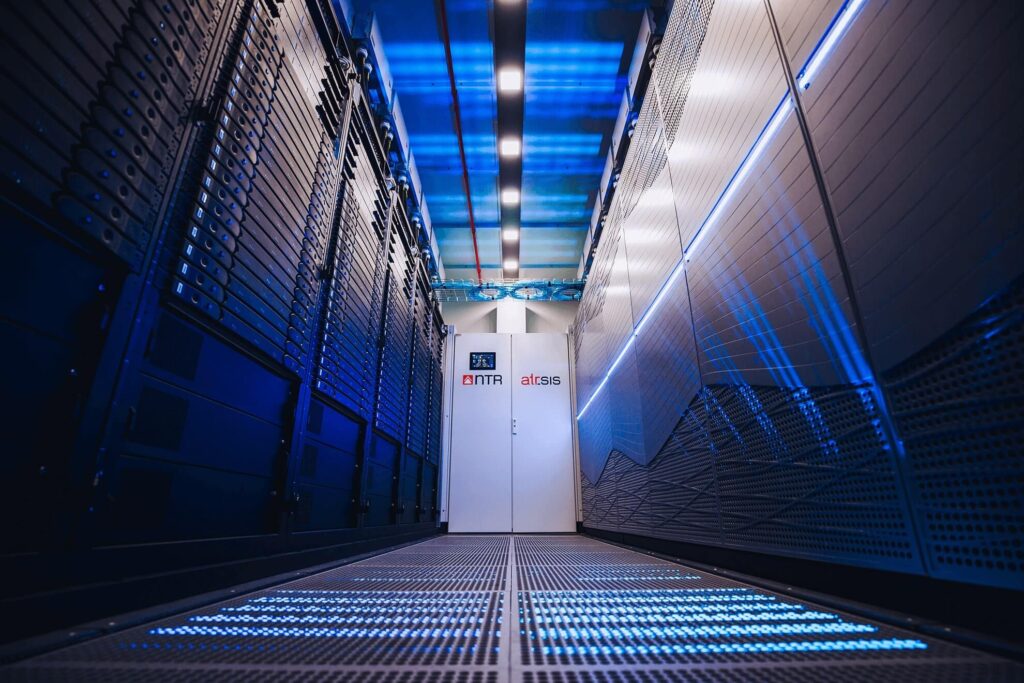
Currently, the most powerful computing cluster in the country is HPC Vega, which was ranked 106th in the world when it was offically turned on in 2021. Vega performs around seven trillion (one thousand times one million times one million) floating point operations (FLOPS) in one second. It draws this power from 960 compute nodes, contributing a total of 122,000 processing cores and 240 graphics accelerators.
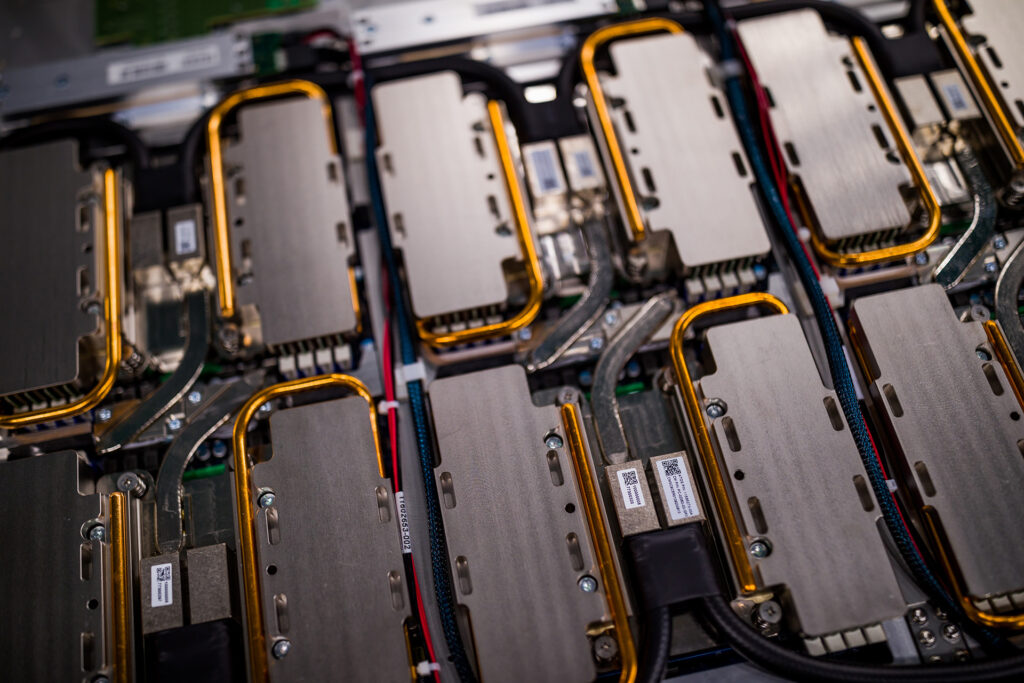
Incidentally, most of the processing power in today’s supercomputers comes from massively parallel graphics accelerators, which are designed to accelerate computation in a wide variety of applications (least of all graphics). The above image of HPC Vega shows a room with cabinets containing compute nodes. The keen observer will note that this supercomputer is not in a circular layout – the reason is probably the space utilisation, which is slightly worse in a circular layout. The picture on the left shows a detail of one compute node with a dozen AMD Epyc 7H12 processors.
The nodes are like drawers that you stack in a cupboard. HPC Vega has 12 cabinets of drawers with compute nodes.
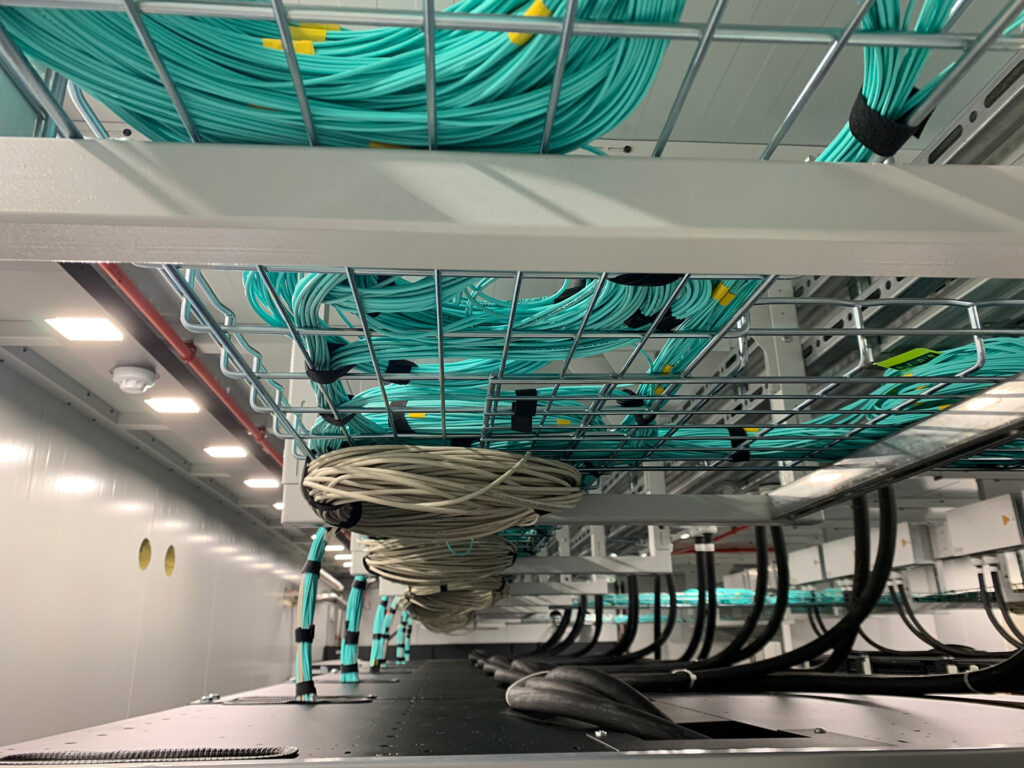
Designing, deploying and managing a high-performance computing cluster is an art of its own. Or as Nikolai Bezroukov, editor-in-chief of softpanorama.org, puts it, running a large compute cluster is not much different from magic. Just think for a moment about the two biggest annoyances in the life of a computer scientist: cooling and cables. How do you effectively cool such a beast, which easily drinks a megawatt or more of electricity? Some of it can be done with air, most of it with liquid. A keen eye will notice the black tubes in the picture of the computing node – they carry coolant. What about tens of kilometres of cables?
It helps both the cooling and the pulling of the cables if the supercomputer is placed in a circle
This was a successful trick by Cray Research, which built one of the best-selling supercomputers, the Cray-1, in 1976. They sold about 80 of them. The C-shaped layout allowed them to have shorter connections between nodes and thus shorter latency times. As a result, the processor hour frequency could be faster, which meant higher performance. It was succeeded in 1985 by the Cray-2, the fastest supercomputer of the time. It was used, among other things, to simulate car crashes and thus improve the mechanical properties of the bodywork. By comparison, 26 years later, the Cray-2’s computing power was matched by the iPad2.
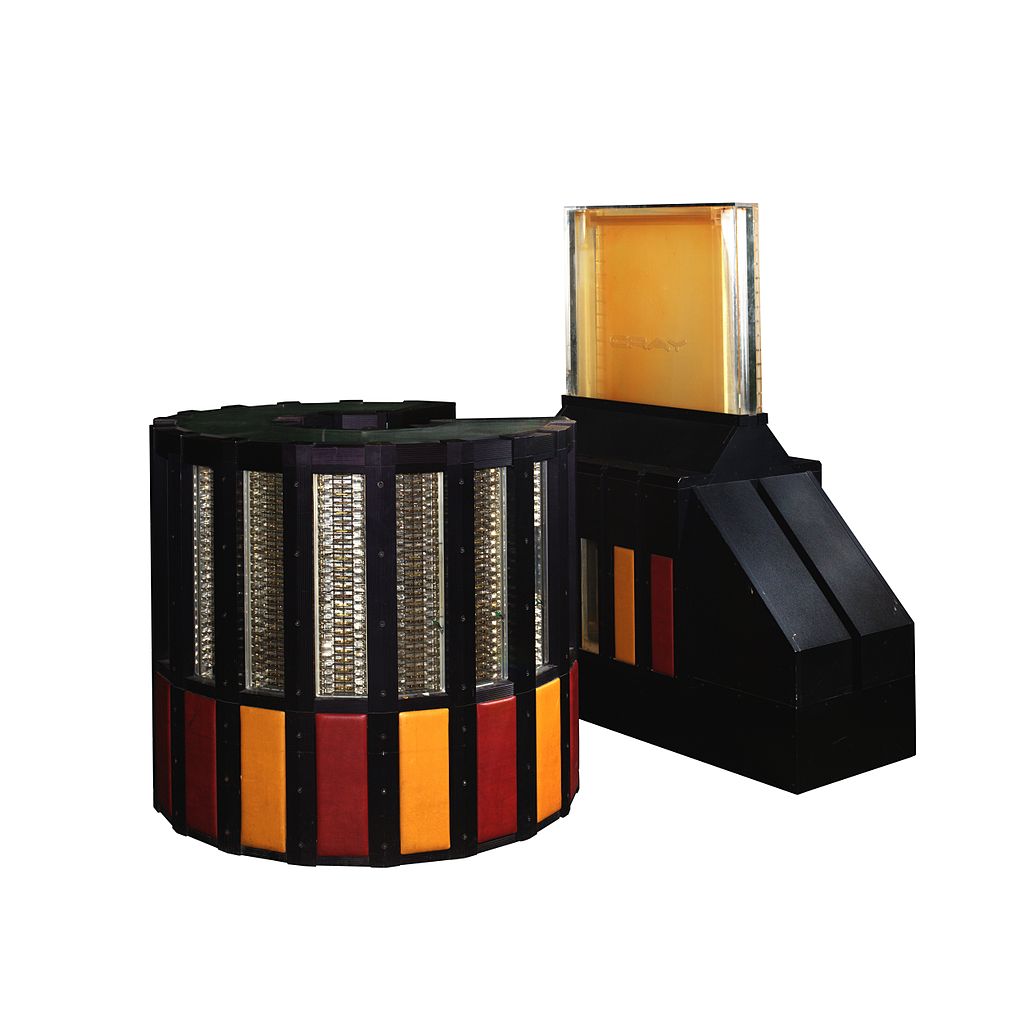
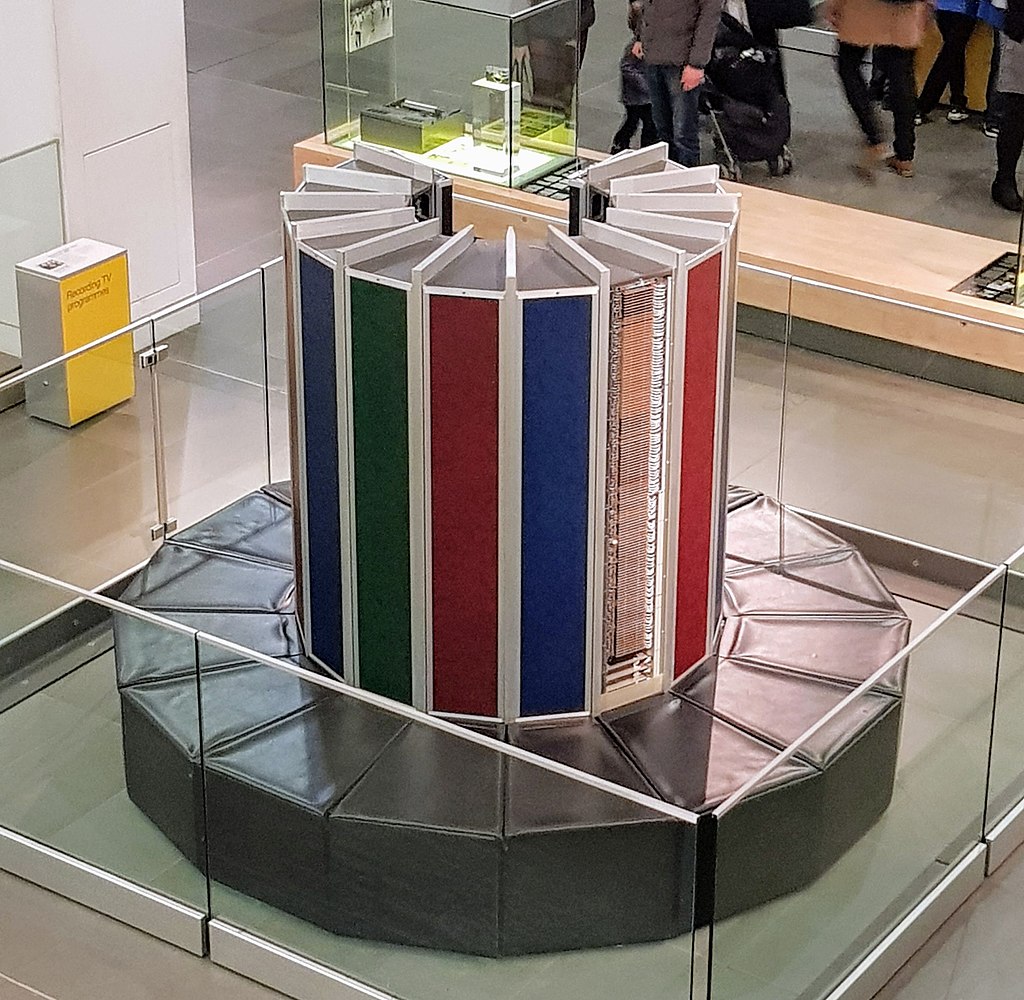
To conclude: is a supercomputer really so different in essence from the PC on my desk?
Let’s use this analogy to help us answer. If a PC is like a car that you start up every now and then and drive to and from work, the seaside or your grandmother’s house, then a supercomputer is a Formula 1 racing car. Both vehicles have tires, a cabin and an engine. The essential difference is that a racing car spends its entire life at top speed, with the accelerator pedal all the way down (we hope this difference applies to you too). That’s why a supercomputer, before it blows out the sixth candle on the cake, passes the baton to the next person in the arena.



